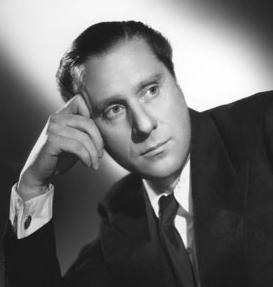
Sir Carol Reed was an English film director and producer, best known for Odd Man Out (1947), The Fallen Idol (1948), The Third Man (1949), and Oliver! (1968), for which he was awarded the Academy Award for Best Director.
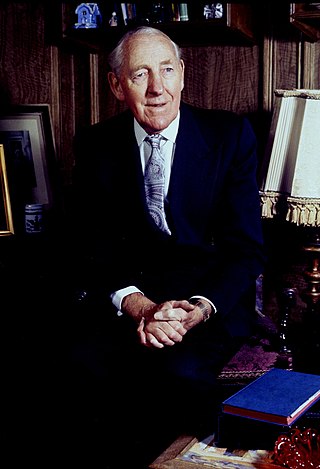
John Norman Hulbert was a British actor, director, screenwriter and singer, specializing primarily in comedy productions, and often working alongside his wife (Dame) Cicely Courtneidge.

The Magic Box is a 1951 British Technicolor biographical drama film directed by John Boulting. The film stars Robert Donat as William Friese-Greene, with numerous cameo appearances by performers such as Peter Ustinov and Laurence Olivier. It was produced by Ronald Neame and distributed by British Lion Film Corporation.
In a Monastery Garden is a 1932 British drama film directed by Maurice Elvey and starring John Stuart, Hugh Williams, Alan Napier, and Frank Pettingell. It was made at Twickenham Studios in London. The film's sets were designed by the art director James Carter.
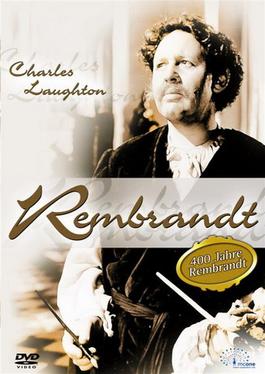
Rembrandt is a 1936 British biographical film made by London Film Productions of the life of 17th-century Dutch painter Rembrandt van Rijn. The film was produced and directed by Alexander Korda from a screenplay by June Head and Lajos Bíró based on a story by Carl Zuckmayer. The music score was by Geoffrey Toye and the cinematography by Georges Périnal.
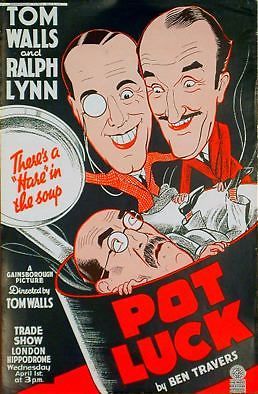
Pot Luck is a 1936 British comedy film directed by and starring Tom Walls. The screenplay is by Ben Travers based loosely on his 1930 stage play A Night Like This. It also featured Ralph Lynn, Robertson Hare, Diana Churchill and Martita Hunt. The cast included members of the regular Aldwych Farce company.

The Passing of the Third Floor Back is a 1935 British drama film directed by Berthold Viertel and starring Conrad Veidt, Anna Lee, Rene Ray and Frank Cellier. The film is based on a 1908 play by Jerome K. Jerome and depicts the various small-minded inhabitants of a building and ways they are affected by the arrival of a stranger who works to redeem them. The work had previously been adapted into a 1918 film version by Herbert Brenon. The film or play is referenced in Ngaio Marsh's 1941 novel, Death and the Dancing Footman.
A Cup of Kindness is a 1934 British comedy film directed by and starring Tom Walls. It also featured Ralph Lynn, Robertson Hare, Dorothy Hyson and Claude Hulbert. It was based on a 1929 play by Ben Travers of the same name, one of the Aldwych farces, and had four of the same cast members. Graham Moffatt, later of Will Hay fame, made his debut appearance as a choir boy in this film.
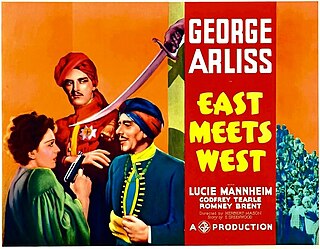
East Meets West is a 1936 British drama film directed by Herbert Mason and starring George Arliss, Lucie Mannheim, Godfrey Tearle and John Laurie. It was made at the Lime Grove Studios in London. The film's art direction was by Oscar Friedrich Werndorff.
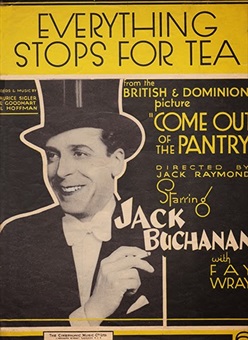
Come Out of the Pantry is a 1935 British musical film directed by Jack Raymond and starring Jack Buchanan, Fay Wray, James Carew and Fred Emney. It is based on a 1916 novel of the same name by Alice Duer Miller, and features musical numbers by Al Hoffman, Al Goodhart and Maurice Sigler.
The Great Barrier is a 1937 British historical drama film directed by Milton Rosmer and Geoffrey Barkas and starring Richard Arlen, Lilli Palmer and Antoinette Cellier. The film depicts the construction of the Canadian Pacific Railway. It was based on the 1935 novel The Great Divide by Alan Sullivan. It was made at the Lime Grove Studios in Shepherd's Bush. The film's sets were designed by Walter Murton.
Southern Roses is a 1936 British musical comedy film directed by Frederic Zelnik and starring George Robey, Gina Malo and Chili Bouchier. It was shot at Denham Studios. The film's sets were designed by the art director Frederick Pusey.

All In is a 1936 British sports comedy film directed by Marcel Varnel and starring Ralph Lynn, Gina Malo and Garry Marsh. The owner of a racing stables has high hopes of winning The Derby, but fate intervenes. It is also known by the alternative title Tattenham Corner, from the play on which it is based.

Peg of Old Drury is a 1935 British historical film directed by Herbert Wilcox and starring Anna Neagle, Cedric Hardwicke and Margaretta Scott. The film is a biopic of 18th century Irish actress Peg Woffington. It was based on the play Masks and Faces by Charles Reade and Tom Taylor. It contains passages of 18th century Shakespearian performance, from The Merchant of Venice, Richard III and As You Like It.
Sailors Three is a 1940 British war comedy film directed by Walter Forde and starring Tommy Trinder, Claude Hulbert and Carla Lehmann. This was cockney music hall comedian Trinder's debut for Ealing, the studio with which he was to become most closely associated. It concerns three British sailors who accidentally find themselves aboard a German ship during the Second World War.
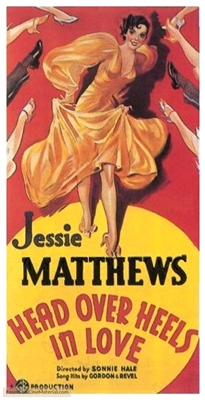
Head Over Heels is a 1937 British musical film directed by Sonnie Hale and starring Jessie Matthews, Robert Flemyng and Louis Borel. It was released in the U.S. as Head over Heels in Love.
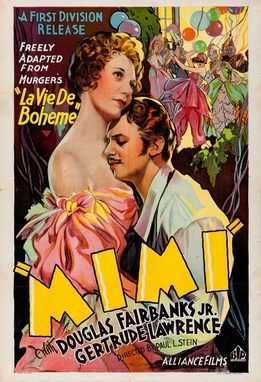
Mimi is a 1935 British romance film directed by Paul L. Stein and starring Douglas Fairbanks Jr., Gertrude Lawrence and Diana Napier. Set in nineteenth century Paris, the screenplay concerns a composer who becomes inspired by a young woman he encounters. The film is based on the 1851 novel La Vie de Bohème by Henri Murger. The score includes arrangements of Giacomo Puccini's music from the opera La bohème, arranged by George H. Clutsam.
This is a summary of 1936 in music in the United Kingdom.

Living Dangerously is a 1936 British drama film directed by Herbert Brenon and starring Otto Kruger, Leonora Corbett and Francis Lister. It was made at Elstree Studios.
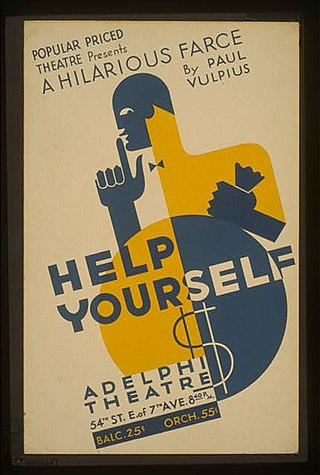
Youth at the Helm is a Hungarian-language play by Paul Vulpius, the joint pen name of Ladislas Fodor and László Lakatos, which premiered in Budapest in 1933. The play was also staged in Vienna, Austria in 1933 under the title Hau-ruck using a German language translation of Fodor and Lakatos's play by Hans Adler who also adopted the pen name Paul Vulpius. Adler's German language translation was the source material for two different English language translations of the play: Youth At the Helm by Hubert Griffith (1896–1953), used frequently in the United Kingdom during the 1930s, and Help Yourself by John J. Coman for the work's Broadway production in 1936. The play has also been staged using the titles Jugend voran (Germany) and L'affare Kubinsky (Italy). The play served as the basis for the 1936 film Jack of All Trades starring Jack Hulbert.














